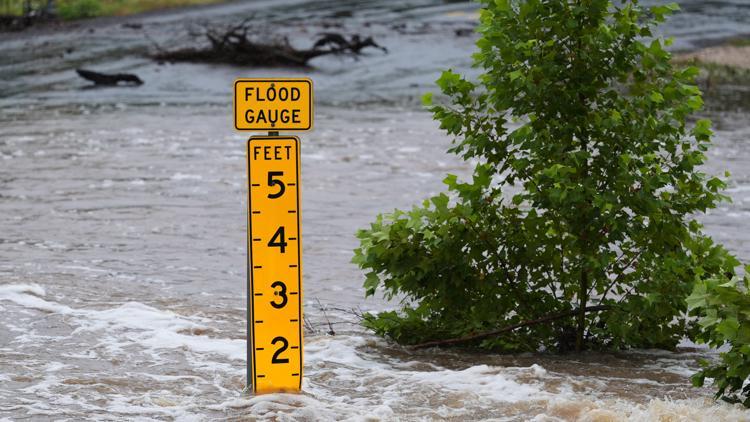Flash floods triggered by intense monsoon rains have claimed the lives of more than 280 people across India and Pakistan, authorities reported Tuesday. The sudden and severe flooding has forced thousands to evacuate their homes as rescue teams race against time to provide relief and prevent further casualties. The disaster has marred a region already grappling with challenges posed by unpredictable weather patterns and infrastructural vulnerabilities.
Flash Floods Devastate India and Pakistan Leaving Hundreds Dead and Displaced
Heavy monsoon rains triggered unprecedented flash floods across regions in northern India and eastern Pakistan, leading to catastrophic damage and widespread human suffering. Torrential downpours overwhelmed riverbanks, causing rapid water surges that engulfed villages, swept away infrastructure, and left communities stranded. Emergency response teams have reported over 280 confirmed fatalities, with numbers expected to rise as rescue operations intensify in remote areas. Thousands have been displaced, forced to seek refuge in overcrowded shelters where access to clean water and medical aid remains a critical concern.
Authorities in both countries have declared multiple districts as disaster zones and are coordinating cross-border relief efforts. Key challenges include:
- Disrupted transportation networks complicating supply deliveries
- Power outages affecting communication and emergency services
- The risk of waterborne diseases escalating in temporary camps
Below is an overview of the impact by region:
| Region | Deaths | Displaced | Infrastructure Damage |
|---|---|---|---|
| Kashmir Valley | 95 | 15,000+ | Bridges washed out, roads flooded |
| Punjab (India) | 70 | 10,500+ | Electrical grid failures, housing destruction |
| Sindh (Pakistan) | 60 | 12,000+ | Farmland submerged, irrigation canals damaged |
| Balochistan | 60+ | 8,000+ | Road closures, limited emergency access |
Emergency Response and Rescue Efforts Underway Amidst Widespread Devastation
Rescue teams from both India and Pakistan have been deployed in full force, coordinating efforts to reach stranded survivors and deliver critical aid. Helicopters equipped with life-saving supplies are actively airlifting victims from flooded areas, while local volunteers and military personnel are navigating treacherous conditions to conduct door-to-door evacuations. The situation remains fluid, with emergency hotlines overwhelmed and relief camps rapidly filling up. Authorities have emphasized the need for immediate medical attention, potable water, and temporary shelter as priority concerns amid the ongoing crisis.
Key emergency response measures underway include:
- Rapid deployment of National Disaster Response Forces (NDRF) units
- Establishment of over 150 temporary relief camps
- Distribution of food packets, drinking water, and medical kits
- Setting up mobile clinics to treat injuries and waterborne diseases
- Continued monitoring of river levels and weather alerts
| Region | Rescue Personnel Deployed | Relief Camps Set Up | People Evacuated |
|---|---|---|---|
| Punjab, India | 1,200+ | 60 | 25,000 |
| Sindh, Pakistan | 900+ | 55 | 18,000 |
| Rajasthan, India | 650+ | 40 | 15,500 |
Experts Call for Improved Early Warning Systems and Infrastructure to Mitigate Future Flood Risks
In the wake of the devastating floods that recently swept through India and Pakistan, experts are urging governments to prioritize advanced early warning technologies and resilient infrastructure developments. Current systems have been criticized for delayed alerts and insufficient coverage in vulnerable regions, leaving thousands unprepared for the sudden onslaught of rising waters. Authorities are now being called upon to adopt real-time satellite monitoring, integrate AI-based predictive models, and enhance community-level dissemination networks to ensure timely warnings.
Beyond warning systems, the need for robust infrastructure has never been more apparent. Specialists emphasize upgrading drainage channels, reinforcing embankments, and constructing flood-resistant housing. These measures are vital to mitigate future risks and protect populations in flood-prone areas. The following table summarizes the key recommendations outlined by disaster management professionals:
| Focus Area | Proposed Solution | Expected Impact |
|---|---|---|
| Early Warning | AI and Satellite Monitoring | Faster, Accurate Alerts |
| Infrastructure | Flood-Resistant Buildings | Reduced Property Damage |
| Community Engagement | Localized Education Programs | Improved Preparedness |
| Drainage Systems | Upgraded Channels & Pumps | Better Water Flow Control |
- Expanding radar and sensor networks
- Investing in sustainable urban planning
- Fostering collaboration between nations sharing river basins
Concluding Remarks
As rescue efforts continue amidst the devastation, authorities in both India and Pakistan are grappling with the immense task of providing relief to affected communities and restoring essential services. With monsoon rains predicted to persist, officials have urged residents to remain vigilant and adhere to safety advisories. The tragic loss of over 280 lives underscores the urgent need for enhanced flood management and disaster preparedness in the region.




